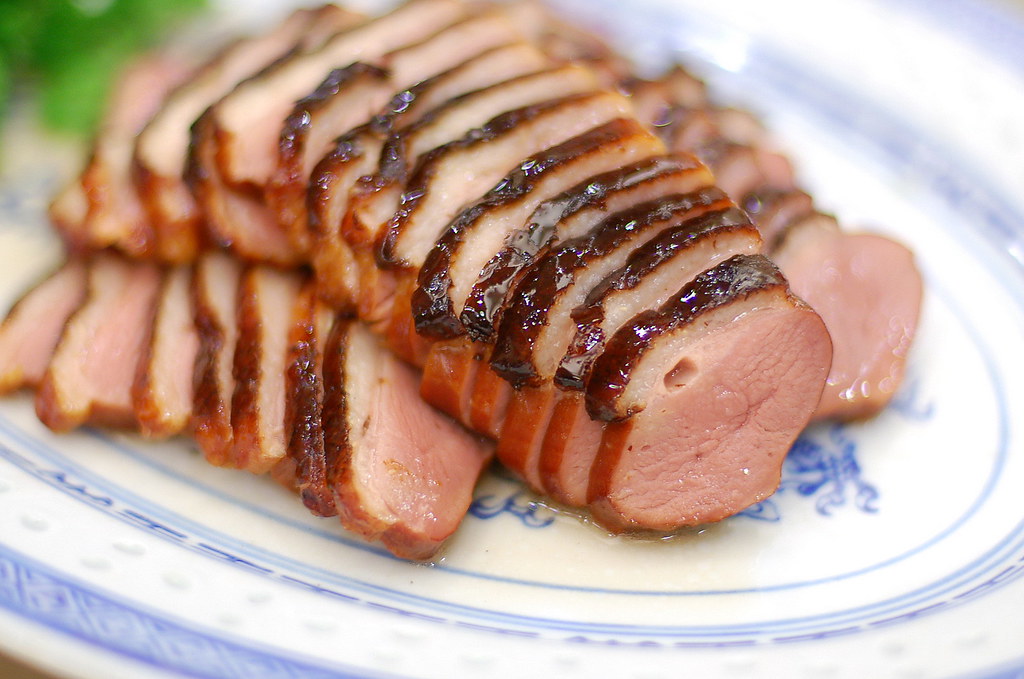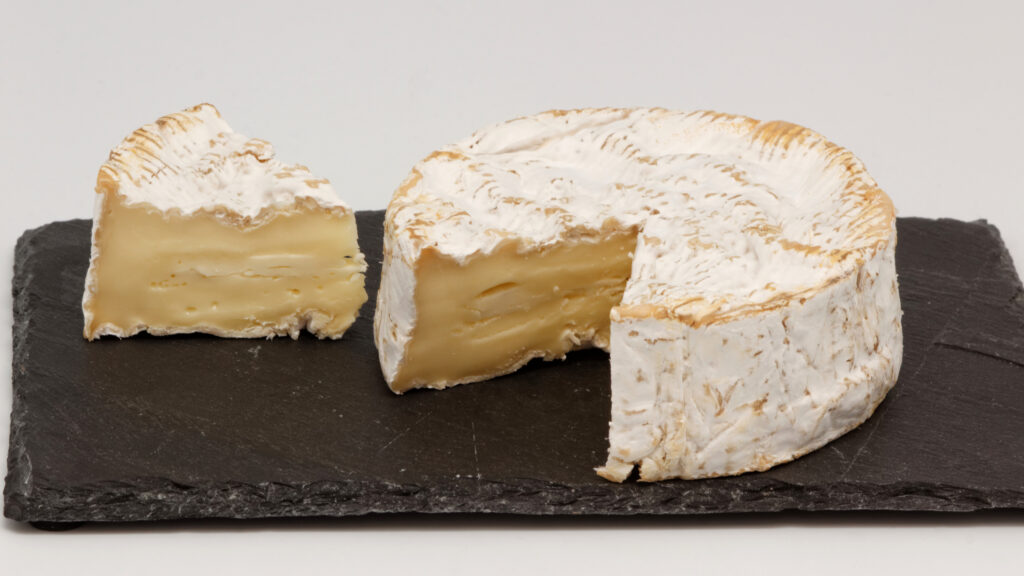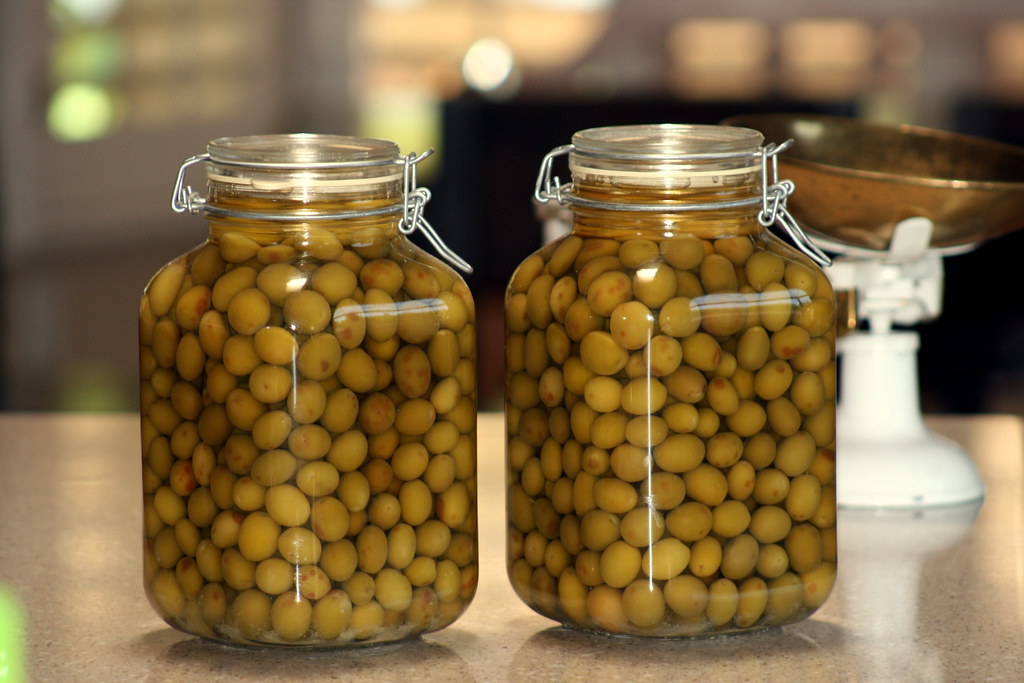
Best Meats and Cheeses for Charcuterie: A Guide to Elevating Your Board Game
I may have been compensated for this post. Please keep in mind that it affects you in no way financially. If an item is being reviewed, I am not obligated to give a positive review and always use my own words. This disclosure is in accordance with the Federal Trade Commission’s 16 CFR, Part 255: Guides Concerning the Use of Endorsements and Testimonials in Advertising. If you would like a review done contact Dannelle at op40k@aol.com
Are you planning a charcuterie board for your next party or gathering? Choosing the right meats and cheeses for charcuterie boards is crucial for creating a delicious and visually appealing spread. With so many options available, it can be overwhelming to know where to start. In this article, we will guide you through the best meats and cheeses to include on your charcuterie board.

When it comes to meats, cured options are the most popular choice for charcuterie boards. Prosciutto is a classic option, with its delicate tissue-thin layers and rich, savory flavor. Other popular cured meats include salami, chorizo, and soppressata. For a spicier kick, add some Calabrese, a dry-cured meat with a hot pepper flavor.
When it comes to cheeses, it’s important to include a variety of textures and flavors. A good rule of thumb is to include at least one soft cheese, one hard cheese, and one blue cheese. Popular soft cheese options include brie, camembert, and goat cheese.
For hard cheese, consider including cheddar, gouda, or manchego. Blue cheese lovers will appreciate the addition of gorgonzola or roquefort.
Understanding Charcuterie
Charcuterie is a French term that refers to the art of preparing and preserving meat products such as bacon, ham, sausage, and pâté. It involves a combination of techniques such as salting, curing, smoking, and fermentation that help to preserve the meat and enhance its flavor.
A charcuterie board is a popular appetizer that consists of an assortment of cured meats, cheeses, crackers, bread, fruits, nuts, and condiments. It is a perfect way to showcase different flavors and textures and create a visually appealing spread.
When selecting meats for your charcuterie board, it is essential to choose a variety of flavors and textures. Some popular choices include prosciutto, salami, chorizo, and pâté. It is also important to consider the origin of the meat, as different regions have their own unique styles and flavors.
Cheese is another crucial component of a charcuterie board. It is important to choose a variety of cheeses with different textures and flavors to complement the meats and other accompaniments. Some popular choices include brie, cheddar, gouda, and blue cheese.
When arranging your charcuterie board, it is important to consider the visual appeal. You can use different shapes, colors, and textures to create an eye-catching display. You can also use different containers and boards to add variety and interest.
Charcuterie is a versatile and delicious way to showcase different meats and cheeses. By selecting a variety of flavors and textures and arranging them in an appealing way, you can create a memorable and enjoyable experience for your guests.

Best Meats for Charcuterie
When it comes to creating a charcuterie board, the meat selection is just as important as the cheese and accompaniments. Here are some of the best meats for charcuterie that you should consider.
Dry-Cured Meats
Dry-cured meats are a staple on any charcuterie board. They are made by salting and air-drying the meat, resulting in a concentrated and intense flavor. Some of the best dry-cured meats for charcuterie the following.
- Prosciutto: Thinly sliced Italian ham that is salty and silky in texture.
- Salami: A cured sausage that comes in many varieties, such as Genoa, soppressata, and chorizo.
- Coppa: A cured pork shoulder that is marbled with fat and has a rich, nutty flavor.
- Bresaola: Air-dried beef that is lean and tender, with a slightly sweet flavor.
Smoked Meats
Smoked meats are another popular choice for charcuterie boards. They are made by smoking the meat over wood chips, which imparts a smoky flavor and aroma. Some of the best smoked meats for charcuterie include the following.
- Smoked Salmon: A cold-smoked fish that is delicate and buttery in texture.
- Smoked Ham: A cured and smoked ham that is sweet and savory in flavor.
- Smoked Duck Breast: A rich and flavorful meat that is perfect for pairing with fruit and cheese.
- Smoked Sausage: A sausage that is cured and smoked, such as kielbasa or andouille.
Cooked Meats
Cooked meats can also be a great addition to a charcuterie board. They are typically poached or roasted, and have a tender and juicy texture. Some of the best cooked meats for charcuterie can include the following.
- Roast Beef: A classic choice that is tender and flavorful.
- Turkey Breast: A lean and healthy option that pairs well with fruit and nuts.
- Ham: A cooked ham that is sweet and salty in flavor.
- Pâté: A spreadable meat that is made from liver, pork, or game, and is perfect for spreading on crackers or bread.
When selecting meats for your charcuterie board, it’s important to choose a variety of flavors and textures. Consider including a mix of dry-cured, smoked, and cooked meats to create a well-rounded and delicious spread.

Best Cheeses for Charcuterie
When it comes to creating a delicious charcuterie board, cheese is an essential component that can elevate the flavors of your meats and crackers. But with so many varieties of cheese available, it can be challenging to know which ones to choose.
Let’s explore the best cheeses for charcuterie and break them down into three sub-sections: hard cheeses, soft cheeses, and blue cheeses.
Hard Cheeses
Hard cheeses are aged for a longer period, which results in a firmer and drier texture. They are perfect for slicing and pairing with cured meats. Here are some of the best hard cheeses for charcuterie.
- Parmigiano-Reggiano: This Italian cheese has a nutty and slightly salty flavor that pairs well with prosciutto and other cured meats.
- Manchego: This Spanish cheese has a buttery and nutty flavor with a slightly sweet and tangy finish. It pairs well with chorizo and other spicy meats.
- Gouda: This Dutch cheese has a mild and nutty flavor that pairs well with salami and other cured meats.
Soft Cheeses
Soft cheeses have a creamy texture and a mild flavor that pairs well with fruit and crackers. Here are some of the best soft cheeses for charcuterie.
- Brie: This French cheese has a buttery and creamy texture with a mild and slightly sweet flavor. It pairs well with prosciutto and fresh fruit.
- Camembert: This French cheese has a soft and creamy texture with a slightly tangy and earthy flavor. It pairs well with smoked ham and crackers.
- Goat Cheese: This cheese has a tangy and slightly acidic flavor that pairs well with sweet and savory flavors. It pairs well with figs and honey.
Blue Cheeses
Blue cheeses have a pungent and salty flavor that pairs well with sweet and savory flavors. Here are some of the best blue cheeses for charcuterie.
- Roquefort: This French cheese has a creamy and tangy flavor with a salty and earthy finish. It pairs well with walnuts and honey.
- Gorgonzola: This Italian cheese has a creamy and tangy flavor with a slightly sweet finish. It pairs well with pears and honey.
- Stilton: This English cheese has a rich and tangy flavor with a slightly sweet and earthy finish. It pairs well with apples and crackers.
Now that you know the best cheeses for charcuterie, you can create a delicious and impressive charcuterie board that will impress your guests.

Pairing Meats and Cheeses for Charcuterie Boards
When it comes to creating a charcuterie board, pairing meats and cheeses is essential to achieve the perfect balance of flavors and textures. Here are some tips to help you pair meats and cheeses like a pro.
Consider the Intensity of Flavors
One of the most important factors to consider when pairing meats and cheeses is the intensity of their flavors. Generally, it is best to pair strong-flavored meats with milder cheeses and vice versa. For example, a spicy salami pairs well with a creamy brie, while a smoky aged cheddar goes well with a mild prosciutto.
Think About Texture
Texture is another important factor to consider when pairing meats and cheeses. Combining different textures can create a more interesting and enjoyable experience for your taste buds. For example, a hard salami pairs well with a soft cheese like goat cheese, while a creamy blue cheese goes well with a crunchy cracker.
Experiment with Different Combinations
Don’t be afraid to experiment with different combinations of meats and cheeses to find the perfect pairing. You can also try pairing meats and cheeses with different fruits, nuts, and spreads to create a more complex flavor profile. Some classic pairings to try include prosciutto and melon, cheddar and apple slices, and salami and olives.
Recommended Pairings
Here are some recommended pairings to help you get started.
| Meat | Cheese |
|---|---|
| Prosciutto | Brie |
| Salami | Goat Cheese |
| Chorizo | Manchego |
| Mortadella | Gouda |
| Pepperoni | Parmesan |
Remember, the key to pairing meats and cheeses is to find the right balance of flavors and textures. With a little experimentation and creativity, you can create a charcuterie board that is sure to impress your guests.
Additional Components of a Charcuterie Board
To take your charcuterie board to the next level, it’s important to include additional components beyond just meats and cheeses. Here are some ideas for other items to include.
Breads and Crackers
Breads and crackers are a must-have on any charcuterie board. They provide a great base for the meats and cheeses and add a nice crunch to the board.
- Baguette slices
- Crostini
- Crackers (such as water crackers or sesame crackers)
- Sourdough bread
- Focaccia
Consider offering a variety of bread and cracker options to cater to different tastes and dietary needs.
Fruits and Nuts
Fruits and nuts are a great way to add some sweetness and crunch to your charcuterie board. Here are some options to consider.
- Grapes
- Apples
- Pears
- Dried apricots
- Dried figs
- Almonds
- Pistachios
- Walnuts
- Cashews
Not only do these items add flavor and texture to your board, but they also provide a healthy option for guests.
Pickles and Olives
Pickles and olives are a great way to add some tangy and salty flavors to your charcuterie board. Here are some options to consider.
- Cornichons
- Pickled onions
- Pickled carrots
- Kalamata olives
- Castelvetrano olives
- Green olives
These items can be a great way to balance out the richness of the meats and cheeses on your board.
Including a variety of breads and crackers, fruits and nuts, and pickles and olives can take your charcuterie board to the next level. Consider offering a mix of sweet and savory options to cater to all tastes.

Storing and Serving Charcuterie
When it comes to storing and serving charcuterie, there are a few things that you should keep in mind to ensure that your meat and cheese board stays fresh and delicious.
Storing Charcuterie
Firstly, it’s important to store your meats and cheeses properly. You should always keep your charcuterie refrigerated until you’re ready to serve it. Most cured meats and cheeses can be stored in the fridge for several days, so you can prepare your board in advance if you need to.
When storing your charcuterie, it’s best to keep it wrapped in wax paper or butcher paper. This will help to prevent the meat or cheese from drying out or absorbing any unwanted flavors from other foods in the fridge.
Serving Charcuterie
When it comes to serving your charcuterie, there are a few things you can do to make sure that your board looks and tastes great. Here are some tips.
- Arrange your meats and cheeses on a large platter or board. You can use a wooden board, slate, or even a large plate.
- Start by placing your cheeses on the board. You can cut them into bite-sized pieces or leave them whole, depending on your preference.
- Next, add your meats. You can fold them into attractive shapes or simply lay them out on the board.
- Add some variety to your board by including some fruits, nuts, and crackers. These can be arranged around the meats and cheeses to create a visually appealing display.
- Consider adding some spreads or dips to your board. Mustard, honey, and jam are all popular choices that pair well with charcuterie.
When serving your charcuterie, it’s important to let it come to room temperature before serving. This will help to bring out the flavors and aromas of the meats and cheeses. You should also provide small plates and utensils for your guests to use when serving themselves.
By following these tips, you can create a beautiful and delicious charcuterie board that is sure to impress your guests.

Final Thoughts on Best Meats and Cheeses for Charcuterie
Congratulations, you now have all the information you need to create the perfect charcuterie board. Remember, the key to a great charcuterie board is to have a variety of meats and cheeses that complement each other.
When selecting meats, consider a mix of cured and cooked meats, with a variety of textures and flavors. Prosciutto, salami, and chorizo are always great choices. If you want to add some variety, try adding some duck or venison salami.
When it comes to cheese, it’s important to have a mix of soft and hard cheeses. Brie, cheddar, and gouda are always crowd-pleasers, but don’t be afraid to experiment with some more unusual cheeses like blue cheese or goat cheese.
Don’t forget to include some extras like nuts, fruits, and crackers to add some texture and variety to your board. And remember, presentation is key! Arrange your meats and cheeses in an aesthetically pleasing way, and your guests will be impressed before they even take a bite.
With these tips, you’re sure to create a charcuterie board that will wow your guests and have them coming back for more. Happy snacking!
Frequently Asked Questions about Best Meats and Cheeses for Charcuterie
What meats are best for a charcuterie board?
When it comes to selecting meats for your charcuterie board, you want to choose a variety of flavors, textures, and colors. Some popular options include prosciutto, salami, soppressata, and chorizo. For a unique twist, consider adding duck prosciutto or bresaola. Don’t be afraid to mix and match different types of meat to create a well-rounded board.
What are some popular cheese options for a charcuterie board?
Cheese is a crucial component of any charcuterie board. Some classic choices include brie, cheddar, and gouda. For a more adventurous palate, try adding blue cheese, goat cheese, or manchego. It’s important to choose a variety of soft, hard, and semi-soft cheeses to provide a range of textures and flavors.
What are some unique meat and cheese pairings to try on a charcuterie board?
Pairing meats and cheeses is an art form. Some classic combinations include prosciutto and melon, salami and cheddar, and soppressata and brie. For a more unique pairing, try pairing chorizo with manchego or duck prosciutto with blue cheese. The possibilities are endless, so don’t be afraid to get creative with your pairings.
Where can I find high-quality meats and cheeses for my charcuterie board?
You can find high-quality meats and cheeses at your local specialty food store, gourmet market, or online retailer. Look for options that are made with high-quality ingredients and have a good reputation for taste and quality. Don’t be afraid to ask for recommendations from the store staff or do some research online to find the best options in your area.
What are some creative ideas for arranging a charcuterie board?
Arranging your charcuterie board can be just as important as selecting the meats and cheeses. Start by selecting a large platter or board to serve as your base. Arrange your meats and cheeses in a visually appealing way, using different heights and textures to create interest.
Add some color and flavor by including fresh fruits, nuts, and olives. Don’t forget to include some small serving utensils and crackers or bread for your guests to enjoy.
What are some alternative options to crackers for a charcuterie board?
While crackers are a classic choice for serving with your charcuterie board, there are plenty of alternative options to try. Consider serving slices of baguette or pita bread, or try using cucumber or carrot slices as a gluten-free option. You can also include some nuts or dried fruits for a crunchy and sweet alternative.


